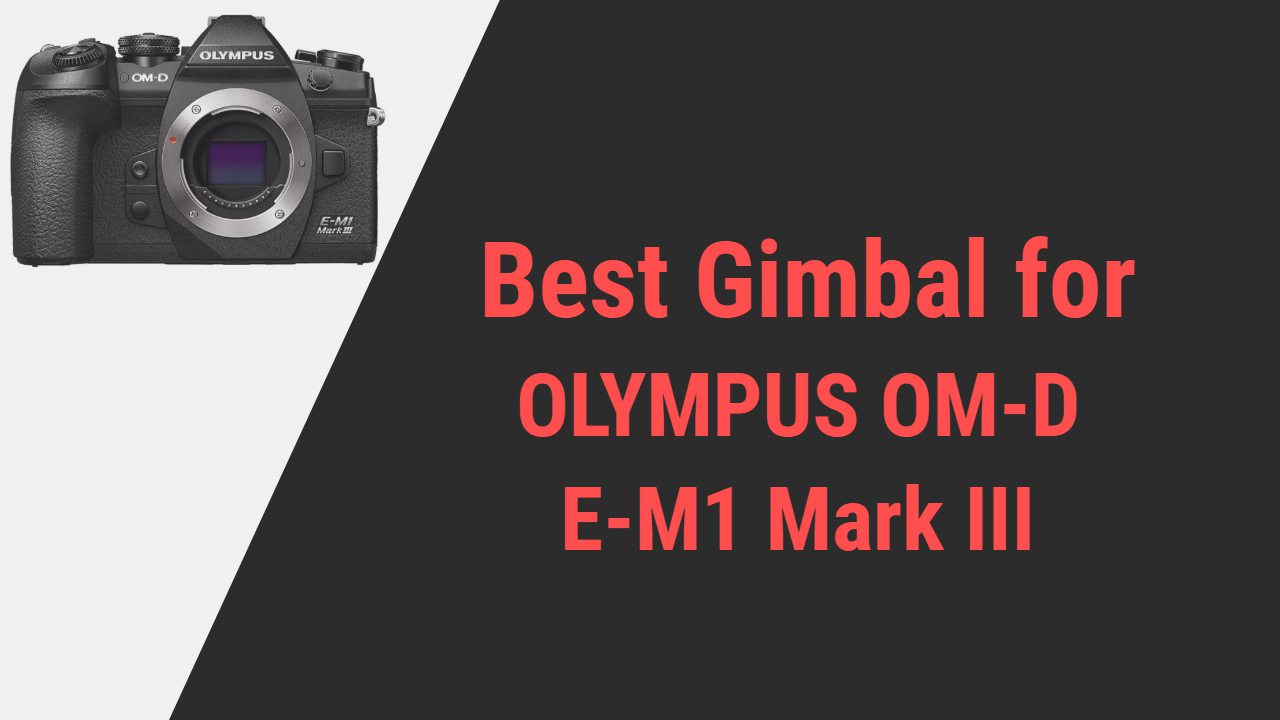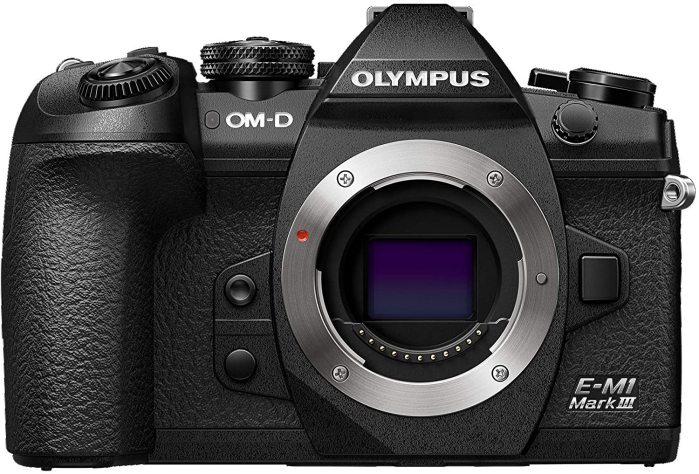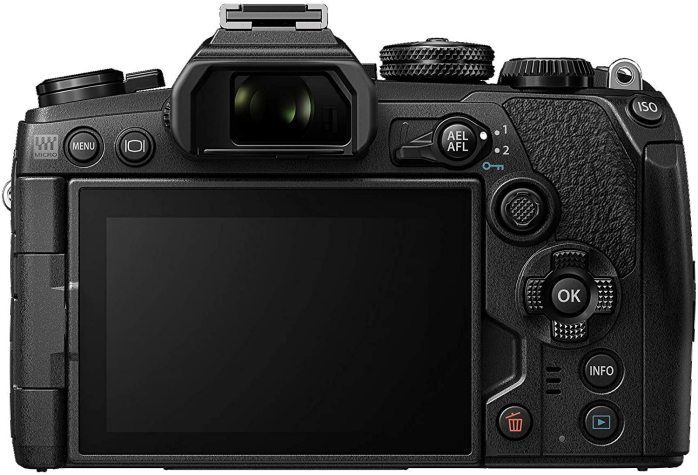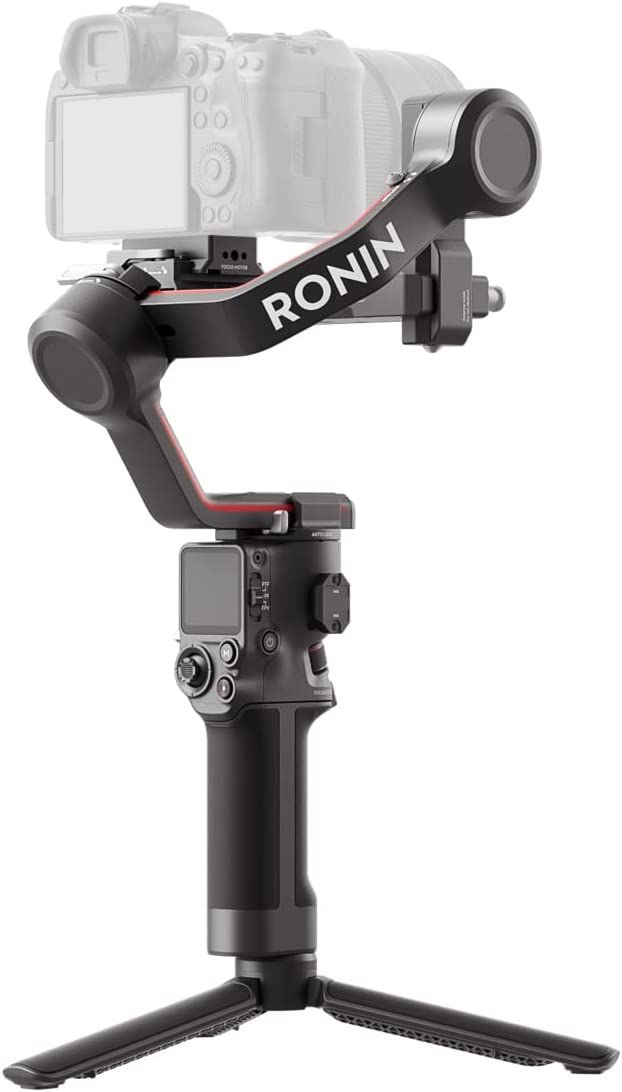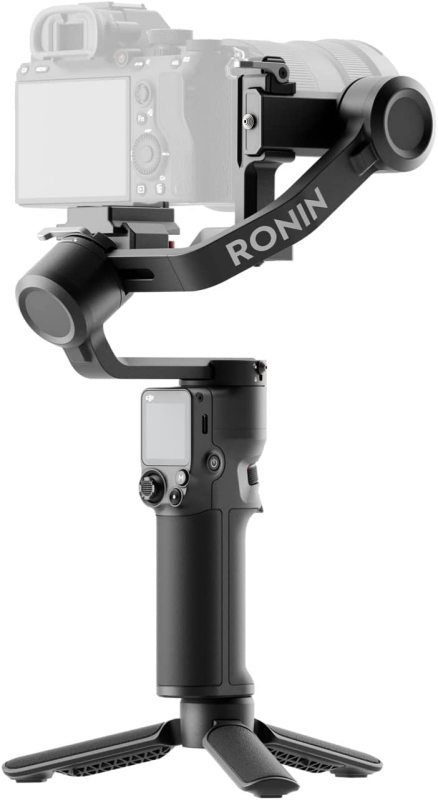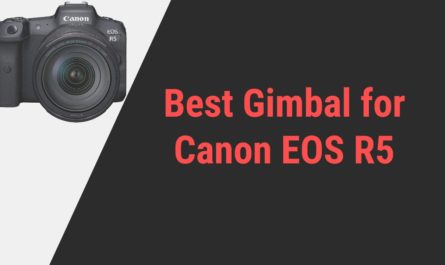Olympus has crafted many digital cameras with the utmost professional qualities; Olympus E-M1 Mark III is still my favorite from their treasury. The camera is vastly popular and famous for its improved performance and impeccable design.
Something as a high performer as the Olympus E-M1 Mark III needs to be paired with an equal level of accessories to implement the target professionalism. Which is why I am going to talk about the best only.
Gimbals are one greatest weapon to use for getting spectacularly balanced shots. These gimbals are a way to explore creativity without much effort if asked.
Picking the right gimbal for your E-M1 Mark III can literally spark your ordinary photography. The only question is how to find the ideal gimbal.
Olympus OM-D E-M1 Mark III
There is no official support from gimbal manufacturers for the OLYMPUS E-M1 Mark III. Some features like capture photos, focus, start/stop recording and app may not work using the gimbal so you have to manually adjust all these things from the camera when shooting.
Other than that, all the mentioned gimbals work perfectly fine and I have personally tested them all with the OLYMPUS E-M1 Mark III.
| DJI RS 3 (Best Overall)

|
| DJI RS 3 Pro (Most High-end - Highest Payload Capacity & Comes with Advanced Features)
    |
| DJI RS 3 Mini (Budget Pick)
    |
After hours of research and analysis, I am listing some of the finest models of gimbal that I believe will do the stabilization job outstandingly. These gimbals have personally experimented with me, and all of them have distinct versatility and character.
So move forward and plug down the adequate fit you consider for your E-M1 Mark III so that you may get your hands on artistic shooting.
Hurry!
Best Gimbals for OLYMPUS E-M1 Mark III
1. DJI RS 3 3-Axis Gimbal for DSLR and Mirrorless Camera
My first choice will always be the one and only DJI brand; they are the only professional I blindly trust, especially when it comes to high-rated cameras like the E-M1 Mark III.
I will start with the globally popular, highly rated, and perfectly smart gimbal DJI RS 3. The gimbal was redesigned to be perfect, one way lighter, sleeker, and advanced, with enough strength to support large cameras.
Inspired by the term “Ready when you are,” the brand curated this perfect tool to emphasize top-notch stability in every shot.
RS 3 comes with the smartest, better, and improved third-generation RS stabilization algorithm; this next-generation stabilization grants stability over low-angle shots and dynamic shots.
Additionally, the gimbal does include a super smooth mode; that uses increased motor torque to enhance stabilization over tricky shots.
There might be trouble with controlling the camera because of the compatibility issue. According to the official listing, the RS 3 gimbal is not entirely compatible with the E-M1 Mark II, and the whole control panel gets affected in this way.
However, a simple connection with USB can allow full access to the camera function and gimbal handling. If you don’t want to invest extra, I recommend you adjust the camera shutter speed, ISO, exposure, and white balance early before usage.
With any other camera, the gimbal multiple controls work the finest; the wireless control manages using Ronin official application while the other intuitive physical dial helps with essential setting parameters.
The gimbal approach 80% largest display; where it introduced the widest colored OLED panel, sized 1.8 inches with precise control and an intuitive graphic interface
DJI RS 3 has a handy design, a compact body, and the least weight of 2.2 pounds; with all the convenience, the gimbal is potent enough to carry the maximum payload of 6.6 pounds.
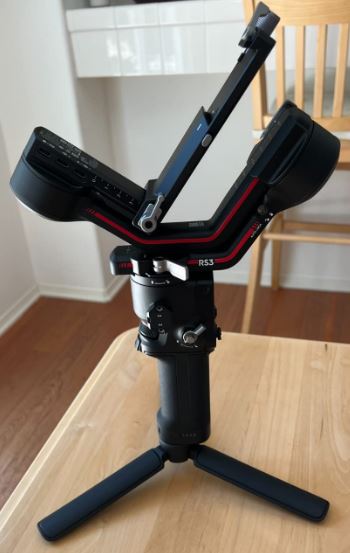

The camera retains intelligent motion functions such as Dolly Zoom, Motion lapse, and panorama with ease.
There is enough room for power; The new battery grip of the gimbal supports a powerful lithium-ion polymer battery charged to 3000 mAh to give 12 hours of straight working on a single charge.
Using the ethnic support of 18-watt PD fast charging, you can recharge the gimbal within 2.5 hours only.
E-M1 Mark III can be operated with the RS 3 gimbal without much hassle; the dual-layered quick-release system is fast and safe enough to carry your dearest camera. Automated Axis lock expands creativity horizon.
Pros
- Upgraded stabilization
- Super smooth mode
- Enhance battery
- Largest OLED Panel
- Live transmitting
- Light weighted
- Enhanced performance
Cons
- Lack strength and durability
2. DJI RS 3 Pro 3-Axis Handheld Gimbal Stabilizer
A spectacular representation of more power and less effort, Thrilling series of high-rated functions in a mid-size gimbal driving real professionalism is next in the series.
I am giving you the uttermost professional DJI RS 3 Pro gimbal, an upgraded stabilizer designed to be sleeker and more powerful than any other DJI product and a perfect companion for E-M5 Mark II.
DJI RS 3 Pro is an excellent gimbal that comprises a greater stability approach and loads of innovative features.
DJI RS 3 Pro doesn’t go entirely with the E-M5 Mark II, meaning there might be some compatibility issues you would notice, like in managing the camera settings or function.
However, the level of professionalism RS 3 Pro can cover the loss; it would be easiest if you could adjust these settings using basic camera functions such as ISO, exposure, shutter speed, and so on.
There are too many RS 3 Pro offers; on the top is out-of-the-world stabilization. Using the upgraded third-generation stabilization, the dynamic subject gets a 20% extra stability dose.
With a peculiar developer protocol, DJI RS SDK, this professional balance tends to work for extensive scenarios.
There are additional things like focusing on technology or tracking. RS 3 Pro has this exquisite LiDAR focusing technology, In which the new LiDAR range finder can project 43200 ranging points in a certain area for the perfect click.
Then comes the tracking; the gimbal is trained to engage with improved Active Track Pro, which keeps an eye on the subject for the perfect click.
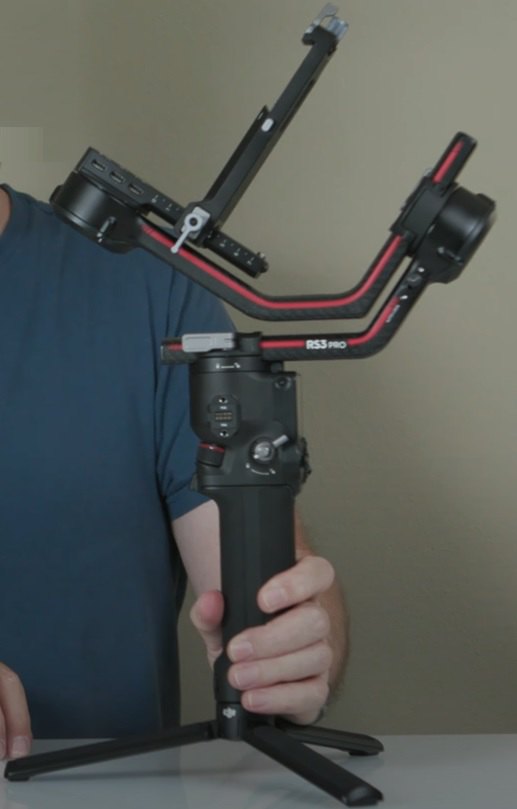

With the all-control hassle, you can monitor the camera activities on the smartphone or the OLED panel sized 1.8 inches.
The gimbal has a fascinating design with the strongest build; carbon fiber construction ensures stiffness while managing the lower weight of 3 pounds approaching durability.
Even with the least weight, RS 3 Pro is potent enough to carry the extreme weight of up to 10 pounds.
The design of the gimbal has an integrated Dual RS/NATO port, one that allows attachment of the twist grip handle, control handle, and other accessories.
Nothing beats the strongest power source; with the involvement of a potent lithium-ion polymer battery charge of 1850 mAh, you can get 12 hours of straight runtime on a single charge.
And thanks to the 18w PD fast charging, a decent time of 2.5 hours will be enough to recharge the battery.
E-M5 Mark II camera can easily tuck in the gimbal using dual-layered quick-release plates along with the auto axis lock, which deliberately secures the parameters and improves the creativity horizon
Pros
- Upgraded professional tool
- SuperSmooth mode
- LiDAR compatibility
- Improved stabilization
- Enhance performance
- Extensive coverage
- Support ActiveTrack Pro
Cons
- Expensive
3. DJI RS 3 Mini 3-Axis Lightweight Gimbal Stabilizer
And lastly, A highly user-friendly gimbal with the primary purpose of easing your wallet strain; DJI’s other magnificent creation and latest launch DJI RS 3 Mini gimbal
Designed expressly for a high-rated professional camera, DJI RS 3 mini is an optimized gimbal with tons of creative functions, meant to enhance the performance of your E-M1 Mark III.
Offering the greatest stabilization comes the most lightweight and sleek single-handed gimbal body, one with the greatest upgrades.
Custom-designed gimbals tend to offer upgraded stabilization; this is maybe why the brand approached third-generation stabilization algorithms on the go for the trickiest angled shot or dynamic filming.
There is no limit to the creativity processed by the Gimbal, and it gets icing on top with the ethical pairing of E-M1 Mark III filming expertise. The gimbal allows creative motion function shooting, including timelapse, panorama, and tracking.
I am fond of creating impressive effects as well without any accessories; however, the design of the RS 3 mini has an integrated NATO mount that allows smooth attachment of the RS Briefcase Handle. This also comes in handy with the detachable tripod, which is used as an extended grip.
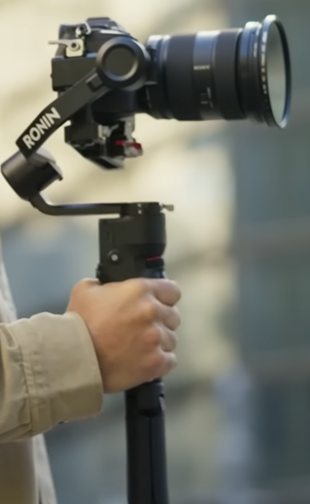

With the least weight of 1.9 pounds, the gimbal is trained enough to carry a maximum payload of 4.4 pounds.
The only negative point I feel is that DJI RS 3 Mini is not entirely compatible with the E-M1 Mark III, the camera functions might get affected in this way. Nevertheless, using an intuitive cable will sort this out for you.
What I did is I adjusted the camera’s basic function manually and didn’t interfere with the gimbal control panel while shooting, and voila.
If you consider this gimbal for any other camera, note that it has multiple control options and wireless support through Ronin’s official application; And you can monitor every single activity on a 1.4-inch wide OLED panel.
Rest is easy as pie, such as the mounting with dual layer quick release plate to find the fastest and most convenient way to mount the camera. And DJI RS 3 Mini doesn’t require additional accessories for horizontal to vertical mode switching shoots.
The gimbal comes with an in-built 2450 mAh battery that is destined to grant 10 hours of straight runtime to shoot all day on a single charge. Using a USB-Type C cable, it takes only 2.5 hours to recharge.
Pros
- Optimized performance
- Compact and least weight
- Upgraded stabilization
- Easy horizontal and vertical switch
- Additional mounts
- Economical Range
- Detachable tripod support
Cons
- The battery should be longer
Gimbal: A perfect professional tool
If you are a keen photographer, you must be already familiar with the term Gimbal. A gimbal is a delightful key to professional filming, a master tool to frame flawlessly clear images.
Curated with the simplest configuration of high-end sensors and motors, a gimbal is designed to engage exposure of stability in every shot.
This is why it is termed as an ultimatum to unnecessary jittering and shakiness that caught up in the way of filming fast pace subjects.
A gimbal is an optimized and convenient version of a tripod with intuitive controls on the outer body, one that manages the tripod as well as the camera during shooting.
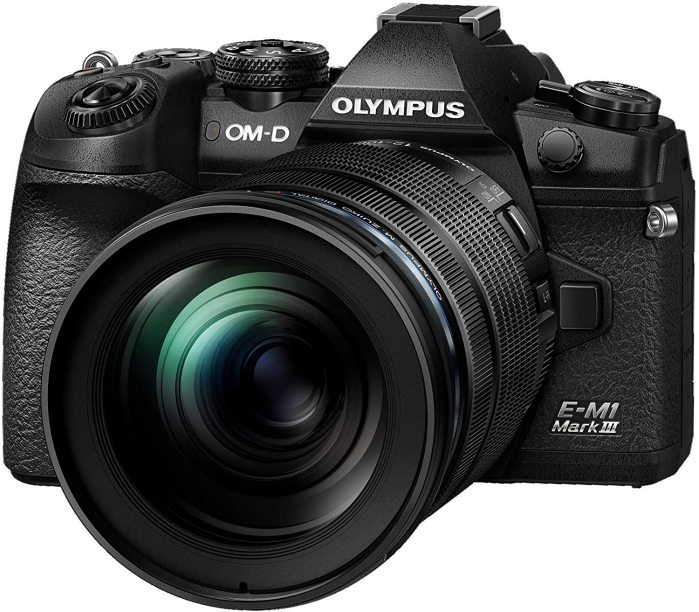

Purpose of Gimbal
Gimbals are a pivotal support system that requires your camera to be fixed in the center while its axis rotates around and captures all the creativity possible.
Gimbals usually consist of effective sensors and algorithms, one that immediately senses the slightest movement caught during the filming. Using a motor, it stabilized the movement in an instant and came up with a flawlessly clear picture.
Now that was all about the stabilization; there are so many other things a gimbal can do; there are other significant purposes a gimbal can fulfill
- The gimbals are a great tool to include professional stabilization
- The gimbals help explore creativity in different angles and shooting mode
- They are quick to set up only to make things super easy to operate
- The Gimbals allow utter safety for your camera with a firm grip
- The gimbals can get you perfect footage of underwater and aerial vision
- The gimbals make enough space for additional accessories to mount
How to use a Gimbal?
Gimbals are synonymous with the super steady quality image; Not just it, the tool significantly improves your photography experience.
With the productive involvement of its axis, motor, sensors, and other algorithms, it interprets the idea of a perfect picture and introduces a definite level of stability in every low angle, fastest running, tricky, and orientational shot; However, the whole idea can come into action if you follow the right way to use a gimbal.
- The key to using a gimbal adequately is balance; once you learn to balance your gimbal, things would do better
- Do read the manual carefully before engaging with the gimbal
- Choose the right and entirely compatible gimbal for your camera to get the best shot
- Do not depend too much on the camera for basic and all the shots
- Try to embrace creativity, and try out the different angles and creative shooting modes.
- Get more of low angle shots with less exposure to keep the stability level balanced in the picture
- Stay consistent, Practice more and more to achieve the perfection
Let’s talk about Camera: Olympus E-M1 Mark III
A camera designed for immense versatility and speed and to fulfill your creative aspects. A well-rounded mirrorless camera is suitable for framing still shots and videos in possibly perfect condition.
Updated with a smart processor and top-notch functions, Olympus has created an ideal camera for enhancing your photography charm. The brand came up with this excellent camera in February 2020
A perfect upgraded camera designed to catch live action and sports has approached better handling and functionality with the help of a better build.
The focusing and ISO just get better while the potent shutter grants enough speed to perform filming at a certain high speed. Enough room for power as well, so it’s a whole package of the professional deal.
With all these exquisite features and potential, the camera brings a change in filming; Olympus E-M1 Mark III does come with an affordable price of $1799 for the body only.
The camera price will increase to $2499 if it comes with a 12-40mm lens kit, and the price will get to $2899 if it comes with a 12-100mm lens kit.
What makes Olympus E-M1 Mark III a masterpiece?
The third iteration of the Olympus high-end mirrorless action camera is widely popular for its creative performance; let’s have a look over what makes the camera so special.
Processor– The camera is designed with the upgraded TruePic IX processor and a smart CMOS sensor
Imaging– The camera’s CMOS sensor with a size Four Third and a resolution of 20 megapixels to shoot still images.
Video– The camera is a master in shooting DCI 4K videos at 24p speed, Ultra HD 4K video at 30p, and full HD at 60p speed.
Recording– The camera allows high-quality videos shot with a stereo microphone with up to 30 minutes recording limit
Focus– The camera uses both auto and manual focus and operates in continuous servo, single servo AF mode.
Focusing points– The supremacy of the Autofocus of the camera uses 121 cross-type phase detection and 121 contrast detection.
ISO– The camera is great at illumination, with the Auto ISO; one with ISO sensitivity range ISO 200 to ISO 25600 that can be extended to ISO 25600.
Viewfinder– The camera includes an in-built electronic touchscreen LCD electronic with 2.36 million dot resolution and 100% coverage along 0.74x approx.
Monitor– The camera does have an articulating LCD panel sized in three wide inches with 1037K dot resolution.
Stabilization– The camera supports top-notch sensor shift five-axis image stabilization that works in both photo and video
Flash– The camera doesn’t include any in-built flash, but it does support an external flash connection in a dedicated TTL system.
Battery– The camera is designed with a lithium-ion battery that can be recharged with USB Type C
Battery Runtime– The battery is empowered with 1720 mAh, enough to grant 420 constant shots on a single charge
Filter– The camera also has a 1 to 5-stop electronic ND filter and 2x crop factor beneficial for creative shooting.
Memory Card– The camera has two slots for memory cards supporting SDHC and SDXC cards in UHS-I bus format at first and UHS-II bus format at second.
Exposure– The camera supports excellent exposure management with aperture priority, shutter priority, and program exposure modes with -5 to +5 EV compensation.
Shutter– The camera is designed with both a mechanical focal plane shutter and an electronic shutter with 1/8000 to 60 seconds speed.
Speed– The shutter works effectively to grant the highest 15 frames per second speed for continuous shooting
Interface– The camera includes an HDMI video interface, stereo audio interface, and one USB- C power interface.
Connectivity– The camera can be connected to any device using upgraded Bluetooth and Wi-Fi connectivity.
Body Style– The camera has an attractive body designed in SLR-Style mirrorless theme with an environment-friendly prospect
Weight– The camera has the strongest durability due to magnesium alloy composite, with the least weight of 580 grams.
Frequently Asked Questions (FAQs)
Q. Is Investing in Gimbal the right choice?
I believe so. Gimbals are quite famous tools nowadays owned by almost every professional; this is because gimbals are considered key to the up-level of professionalism in the picture.
These optimized tools are designed to grant stability to dynamic or fast-moving subjects without much effort. The gimbals are designed to take care of the photographer’s comfort, making them ideal options for long-hour videography.
And there are other benefits too like the creativity you can experience with the Gimbal expertise, so yeah, I believe investing in a gimbal would definitely be a charm to your photography skill.
Q. Should I buy a gimbal or a tripod?
Both of them are the finest tool to implement stabilization in the footage. However, on the scale of comfort and ease, I would say gimbal might be the perfect tool for balancing your regular day footage.
These can be purchased easily from the market and are straightforward to control, not to mention gimbals are reasonably pocket-friendly. However, if your workflow requires high-end professionalism, you have to move towards the traditional stabilizer; they are trained to handle the largest camera with the bulky lens, which apparently Gimbals cannot.
Q. Which is the best gimbal for E-M1 Mark III?
Well, there are tons of options for the E-M1 Mark III advanced camera, and choosing one best from them is a pretty trickiest choice. What I have learned summarizes that DJI RS 3 Pro is the best professional tool your camera could get.
Despite the compatibility, the gimbal with 10 pounds weight, exceptional filming abilities, and innovation seems perfect for a balanced image. However, if you want to explore more, there are other fish in the sea; just look for payload, compatibility, weight, controls, and brand you are good to go.
Summing up!
Okay, that was, I think, all the listing of the top best gimbals and their brief review, along with an informative buying guide section. I hope this will be enough data to find out what suits best for your camera.
Nevertheless, if you want to explore other seas in the fish, you may search in the market but only with the significant factors kept in mind; factors like power, payload, compatibility, versatility, etc.
So, now that we are done with the article, there is no reason to stick with that amateurish, crappy, and blurred shot; You can now be an expert and enjoy the fruitful adventure of the gimbal.
Thus at the earliest, turn to the flawless competency of a gimbal and get your creative shooting started immediately with the first step of picking a gimbal.
Which of these gimbals will be lucky enough to get accompanied by your, and which ones are enough to be saved in your Wishlist for later-buy
I would love to hear all about it, so drop your affection in the comment section below.
And stay tuned for more fascinating blogs about the filming because you are on the way to evolving better in the photography world.
Stay safe!

